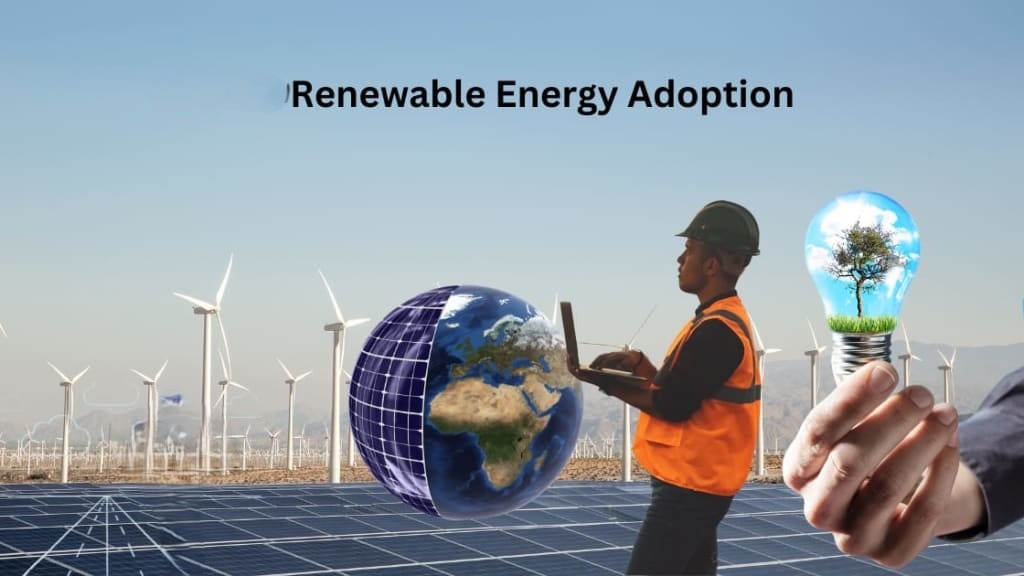As the world faces growing climate challenges, international cooperation has become essential to accelerating the transition from fossil fuels to renewable energy. From global accords to regional strategies, international policies are now the driving force behind the rapid adoption of clean energy technologies such as solar, wind, hydro, and geothermal power.
These policies are shaping how countries invest, innovate, and collaborate to build a greener, more sustainable future.
Why Renewable Energy Adoption Matters:
Renewable energy isn’t just about reducing carbon emissions — it’s about building energy independence, economic resilience, and environmental stability.
With the global energy sector responsible for over 70% of greenhouse gas emissions, the shift toward renewables is crucial for meeting international climate targets and ensuring long-term sustainability.
The good news: coordinated international efforts are making this transition faster and more achievable than ever before.
Major International Policies Powering Renewable Energy Growth:
1. The Paris Agreement (2015)
The Paris Agreement remains the cornerstone of global climate action. Signed by 195 countries, it aims to limit global warming to well below 2°C, with efforts to cap it at 1.5°C above pre-industrial levels.
Under this agreement, nations submit Nationally Determined Contributions (NDCs) — plans outlining their renewable energy goals, carbon reduction targets, and progress reports.
2. The European Green Deal (2019)
The European Union (EU) has positioned itself as a world leader in renewable energy policy through the European Green Deal. This comprehensive plan aims to make Europe the first climate-neutral continent by 2050.
Key components include:
• The REPowerEU Plan — increasing the renewable share of energy to 45% by 2030.
• Mandatory solar panels on new commercial buildings by 2027.
• Massive funding for clean hydrogen, battery storage, and grid modernization.
3. The U.S. Inflation Reduction Act (IRA, 2022)
The Inflation Reduction Act is the most significant clean energy legislation in U.S. history. It allocates over $370 billion to promote renewable energy deployment, domestic manufacturing, and electric vehicle adoption.
4. The International Solar Alliance (ISA)
Founded by India and France in 2015, the International Solar Alliance unites over 120 countries under one goal: to make solar power accessible and affordable globally.
The ISA focuses on financing solar projects, sharing technology, and building capacity in developing nations.
5. UN Sustainable Development Goals (SDG 7)
The United Nations’ Sustainable Development Goal 7 aims to ensure affordable, reliable, sustainable, and modern energy for all by 2030.
It encourages governments and the private sector to invest in renewable infrastructure, expand access in rural areas, and promote clean cooking solutions.
How Global Policies Translate into Local Impact:
International frameworks are vital, but real progress happens when countries implement them locally. Here’s how these policies are transforming communities:
• Investment Opportunities: Countries now attract billions in clean energy investments due to policy certainty.
• Job Creation: Renewable industries are creating millions of green jobs globally.
• Energy Access: Rural electrification projects powered by solar and wind are bringing light to remote villages.
• Technological Innovation: Cross-border collaboration accelerates advancements in solar storage, smart grids, and electric mobility.
The Future of International Renewable Policy:
Looking ahead, the next phase of global energy policy will focus on:
• Strengthening carbon pricing and green trade mechanisms.
• Expanding cross-border renewable grids (like the proposed One Sun One World One Grid initiative).
• Encouraging public-private partnerships for faster innovation.
• Promoting energy justice, ensuring that developing nations aren’t left behind.
Conclusion:
The renewable energy revolution is no longer confined to national borders — it’s a global movement powered by shared goals, strategic policies, and technological progress.
International agreements like the Paris Accord, European Green Deal, and International Solar Alliance are proving that when nations work together, sustainable change becomes unstoppable.
The sun, wind, and water connect us all — and with the right policies in place, they will power a cleaner, fairer, and more resilient world for generations to come.




